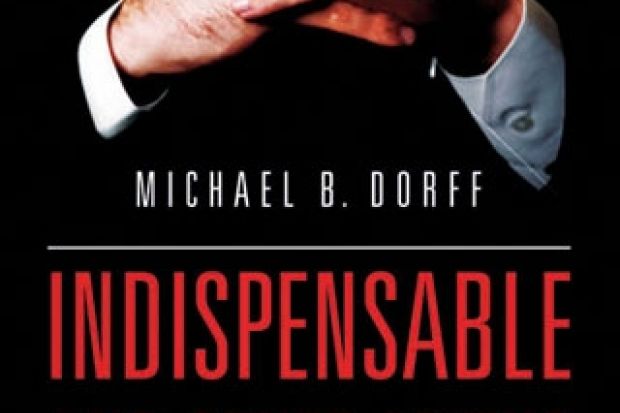In his landmark 1974 study Working, Studs Terkel observed that being driven by money and being instrumental at work to achieve it can have negative personal consequences: “Work is about a search for daily meaning as well as daily bread, for recognition as well as cash, for astonishment rather than torpor, in short for a sort of life rather than a Monday through Friday sort of dying.” Here, Michael Dorff echoes that view as he dismantles some enduring myths about the behaviour of chief executive officers: first, that awarding them performance-related pay improves corporate performance; and second, that CEOs can have an impact on a company’s results or stock market value.
Dorff argues convincingly, from the evidence available, that the behavioural theory developed in capitalism that performance-related pay is a significant motivator for employees does not hold up to scrutiny. The assumption that “to get the most out of their employees, companies had to harness their workers’ self-interest by tying pay to their performance”, he notes, is simply not supported by research. This extends to bonuses and stock options, which are also justified as supposed motivators of performance in various fields, such as banking. Dorff also offers evidence that senior executives have little impact on a company’s stock market value. Indeed, he goes further and suggests that performance-related incentives for top executives can erode their intrinsic motivations, undermining their “high-level cognitive skills” such as creativity, analytical reasoning and innovation, ultimately inhibiting them from driving positive change and leading them to be too short-termist in their strategy and by implication more risk averse.
The first of this book’s three parts asks “what’s wrong with the dominant theories”, with chapters on “The puzzles of CEO compensation”, “The corporate personality myth”, “Market mythology” and “Incentives mythology”. Here, Dorff scrutinises the alleged links between corporate performance and CEO compensation, unpicking the myths as he goes, and supplying salient examples of individuals and companies where the reality looks nothing like those myths. Take the success of Jack Welch, the former CEO of General Electric and an icon of the leadership personality cult: how much of GE’s success, asks Dorff, “was due to Welch as opposed to GE’s pre-existing personnel, intellectual property, factories, market position, and brand reputation? How much was due to general market conditions or fortuitous circumstances? Crediting Welch alone with the rise of GE’s stock price seems an extreme position.” This is exactly the argument he makes throughout the book: the CEO’s contribution is certainly a part, but probably a small part, of the success of any business.
Dorff next considers the evidence for “what’s really going on”, in chapters highlighting “Performance pay mythology”, “Causation mythology” and “Predictability mythology”. He demonstrates that if we plot the growth in a nation’s gross domestic product against the pay of its CEOs, there is absolutely no relationship. In terms of corporate behaviour, he suggests that two characteristics prevail: boards don’t look at the empirical evidence in deciding the structure of CEO pay packages – and they are primed to pay CEOs too much.
In the book’s third part, and continuing to draw on credible facts, research findings and case studies, Dorff asks how the system can be reformed, with chapters on “Alignment mythology” and “Moving forward”. The “shareholder primacy theory” – that companies should concentrate on activities that enhance shareholder value, regardless of the costs to the company and society through excessive executive pay – he argues, might not be the best model. Alternatively, adopting mandatory stakeholder rules about executive pay linked to shareholder value may mitigate its downsides. In his final chapter, Dorff argues for making shareholder votes on executive pay binding rather than advisory, the inclusion of large shareholders on boards’ remuneration committees, and offering senior executives low bonuses for distinct achievements on a specific formula-based approach.
This is a must-read for human resources professionals and others willing to give serious thought to CEO and top management pay, and what those people realistically can and do deliver. In many businesses, CEOs and other senior executives are depleting profits that could be reinvested in business growth and more jobs. The pay gap between the average employee and the CEO has grown out of all proportion, and is a demotivator for many who deliver at the coalface of businesses. And the business of running businesses should not, after all, be about the financial rewards, but the psychological ones. As Henry David Thoreau wrote: “How prompt we are to satisfy the hunger and thirst of our bodies; how slow to satisfy the hunger and thirst of our souls.”
Indispensable and Other Myths: Why the CEO Pay Experiment Failed and How to Fix It
By Michael B. Dorff
University of California Press, 328pp, £24.95
ISBN 9780520281011 and 0958593 (e-book)
Published 4 July 2014
Register to continue
Why register?
- Registration is free and only takes a moment
- Once registered, you can read 3 articles a month
- Sign up for our newsletter
Subscribe
Or subscribe for unlimited access to:
- Unlimited access to news, views, insights & reviews
- Digital editions
- Digital access to THE’s university and college rankings analysis
Already registered or a current subscriber? Login





